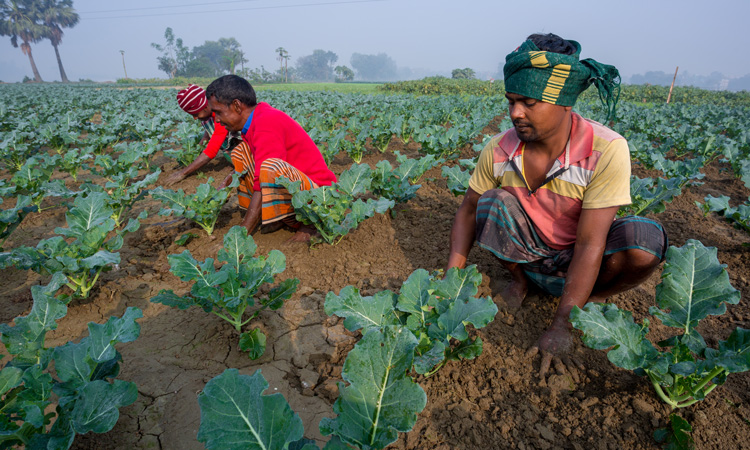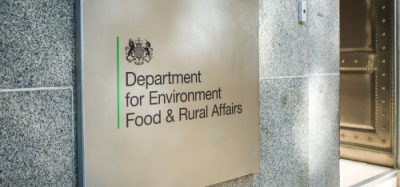Report identifies “hotspot countries” heading for COVID-19 food crises
- Like
- Digg
- Del
- Tumblr
- VKontakte
- Buffer
- Love This
- Odnoklassniki
- Meneame
- Blogger
- Amazon
- Yahoo Mail
- Gmail
- AOL
- Newsvine
- HackerNews
- Evernote
- MySpace
- Mail.ru
- Viadeo
- Line
- Comments
- Yummly
- SMS
- Viber
- Telegram
- Subscribe
- Skype
- Facebook Messenger
- Kakao
- LiveJournal
- Yammer
- Edgar
- Fintel
- Mix
- Instapaper
- Copy Link
Posted: 20 July 2020 | Sam Mehmet (New Food) | No comments yet
FAO and WFP have collaborated on an analysis of countries which could be part of the “worst food crisis in generations”.


New analysis by the United Nation’s Food and Agriculture Organization (FAO) and World Food Programme (WFP) has identified 27 countries that are on the frontline of impending COVID-19-driven food crises, as the pandemic’s knock-on effects aggravate pre-existing drivers of hunger.
Countries include Afghanistan, Bangladesh, Haiti, Venezuela, Iraq, Lebanon, Sudan, Syria, Burkina Faso, Cameroon, Liberia, Mali, Niger, Nigeria, Mozambique, Sierra Leone and Zimbabwe.
The joint analysis by FAO and WFP warned that these “hotspot countries” are at high risk of – and in some cases are already seeing – significant food security deteriorations in the coming months, including rising numbers of people pushed into acute hunger.
“Now they are on the frontline and bearing the brunt of COVID-19’s disruptive effects on food systems, which are fuelling a hunger crisis within a health crisis,” FAO Director General, Qu Dongyu, said. “We must not think of this as a risk that will emerge sometime down the line. We cannot treat this as tomorrow’s problem. We need to do more to safeguard both food systems and our most vulnerable populations – right now.”
FAO and WFP suggested that there are four main ways that COVID-19 is pushing people into deeper hunger:
- Dropping employment and wages means that people have less money to spend on household food and that overseas workers send to relatives in food insecure countries as remittances. At the same time, food prices are up in many hotspot countries, posing a barrier to food access
- A range of disruptions associated with necessary pandemic and health countermeasures are also having significant – and increasing – impacts on food production and supply
- Plummeting government revenues mean that critical safety nets such as social protection and school feeding programmes are underfunded and unable to respond to growing needs
- The pandemic may contribute to political instability as well as fuelling conflict, for example between communities over natural resources like water or grazing land or migration routes, which further disrupts agricultural production and markets.
Surveyed farmers have reported numerous challenges in accessing seeds, resulting in reduced planting. In Haiti, 90 percent of interviewees said they expect to see a significant decrease in cereal production. In Colombia, over half of livestock keepers questioned reported difficulties in accessing feed, while in South Sudan, two-thirds of respondents said they are struggling to access animal health support.
This dynamic is likely to lead to a vicious cycle of declining production, reduced agricultural labour opportunities and increasing food prices, resulting in negative coping strategies and a further deterioration of food and nutrition security, FAO and WFP warned.
In a bid to counter these trends, FAO released a revised appeal for $428.5 million under the UN system’s Global Humanitarian Response Plan for COVID-19 that addresses the needs in the food and agriculture sector, focusing on urgent livelihoods assistance to safeguard livelihoods, maintaining food chains and ensuring the most vulnerable people can access and produce vital, nutritious food, as also on data collection and analysis that can inform interventions.
“If we act now and at scale, we can keep as many people as possible producing food, safeguard their livelihoods and reduce their need for humanitarian food assistance, while laying the foundations for a resilient recovery,” said Dongyu. “It is not too late to prevent the worst hunger crisis in generations.”
Related topics
COVID-19, Food Security, Regulation & Legislation, Research & development, Supply chain, Sustainability
Related organisations
Food and Agricultural Organization of the United Nations (FAO), World Food Programme (WFP)









